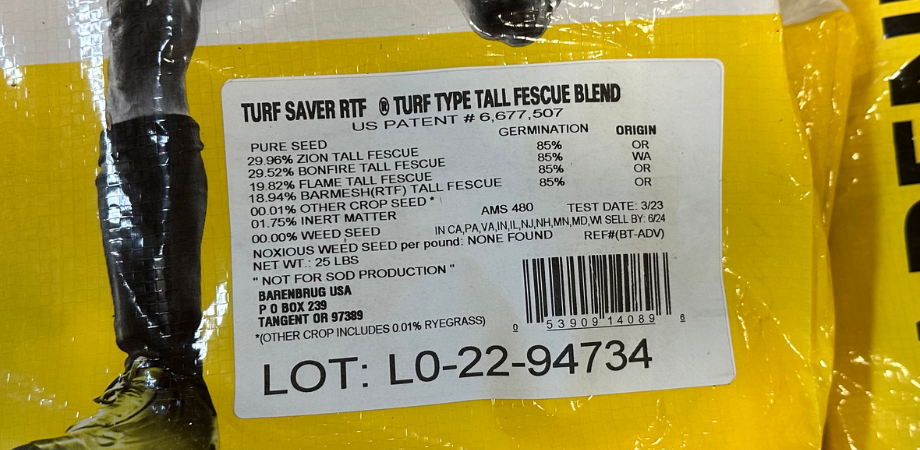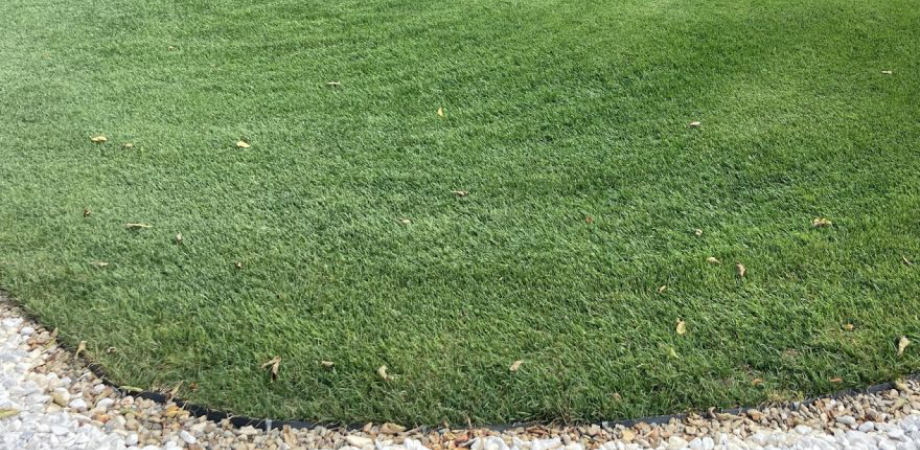Maintaining athletic fields is crucial for ensuring optimal game conditions, especially when the spring sports season rolls around. One effective method to achieve this is through dormant seeding, a practice that involves sowing grass seeds on bare soil and thinly covered areas during the dormant winter months—around mid-November through early March—and waiting for them to germinate in the spring. As long as soil temperatures are (and stay) below 40°F, it’s prime time to dormant seed. We’ll cover the benefits of dormant seeding athletic fields, including the potential positive impacts on gameplay in the spring and the overall benefits of seed establishment.
Choosing a Seed Type
First, turf managers will want to pick the type of seed that will grow the best based on their geographic location, conditions, and more. Some of the most common turfgrass varieties used for dormant seeding include fescue, bluegrass, ryegrass, and bentgrass.
Perennial ryegrass and Kentucky bluegrass establish fast compared to some other types of turf, and some types of ryegrass can germinate in frigid temperatures. Determine what characteristics are most important and pick a seed type.
The Science Behind Dormant Seeding
The soil structure of your field changes during the winter, with particles expanding and contracting and pores opening up. Those processes mean seed-soil contact, which directly influences germination, is enhanced. Since there’s a greater chance of seedlings dying or being injured in the colder months, rates should be increased by 25-50% to account for the ones that won’t make it. Remember: When you’re choosing between dormant seeding and spring seeding, be sure to compare the potential pros and cons of both.
Dormant Seeding Tips
- Clear the area and rake it before spreading the seed.
- Remember that you can overseed during the winter months, but don’t overdo it.
- Growth blankets can help with establishment, protect seed from rain and traffic, and more.
- Spreaders that won’t result in damage or compaction are recommended in non-dry areas.
While traditional wisdom might lead towards fertilizing immediately after seeding—in many cases that’s true—dormant seeding is different. There’s no need to fertilize until seeds begin to germinate as the soil warms up, usually starting at around 50°F or so. In the same vein, don’t apply any pre-herbicides until germination has taken place, since pre-emergents kill all seeds. We have another post that goes more in depth about what to expect after dormant seeding if you want to learn more.
Benefits of Overseeding
1. Game-Ready Fields for Spring Sports
One of the primary advantages of dormant seeding athletic fields is the positive impact it can have on the spring sports season. Seeding during the dormant season allows the seed to establish itself, developing strong and robust root systems and stems (tillers, rhizomes, and stolons) before the onset of spring. This early establishment ensures that the fields are ready to support and withstand intense traffic, providing a dense and uniform turf surface that helps players perform and reduces the chance of injury—to both the turf and players alike.
2. Optimal Germination Conditions
Dormant seeding takes advantage of the natural dormancy period of many grass species, allowing the seed to remain dormant in the soil until favorable germination conditions arise. As winter transitions into spring, the combination of increased soil temperatures and moisture creates an ideal environment for germination.
This strategic timing ensures that the seeds are in place and ready to germinate as soon as conditions become favorable. The result? Quicker and more uniform establishment of turf, giving turf managers a head start in preparation for the demanding spring sports season.
Adding Dormant Seeding to Your To-Do List
Dormant seeding lets field managers ensure resilient and game-ready fields for spring, enhancing the performance of athletes and extending the life of their turfgrass. Your ATS rep can help you plan a site-specific dormant seeding project—drop them a line!












